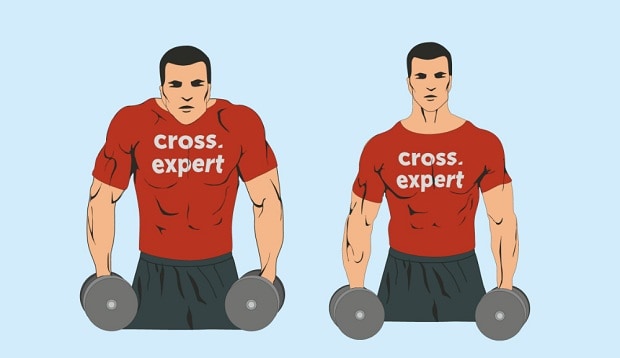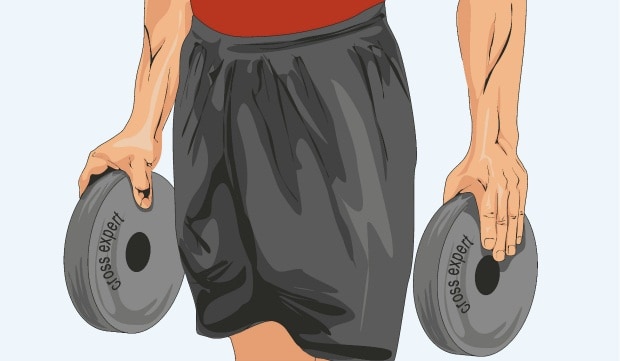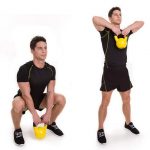
Many fitness and crossfit athletes pay great attention to working out all muscle groups in their body, but at the same time they often forget about exercises for the hands. Yes, in fact, the size of our wrists is a genetic factor, but this does not make training them a waste of time – there are many effective hand exercises that increase the strength of the wrists, grip and forearms. Today we will try to figure out how to pump up the wrists at home and on what principles effective hand training should be based.
In this article, we will cover the following aspects:
- why we need to train our wrists;
- types of exercise;
- typical mistakes of beginners.
Why do you need to do hand exercises?
People of ectomorphic body type often notice that their thin wrists look disproportionate against the background of well-developed muscles of the arms and shoulders, and “how to swing the wrist?” Is the first question they ask the instructor in the gym. This picture is due to the thin radius and narrow wrist joint; in many ectomorphs, the volume of the wrist does not exceed 12 cm. In this regard, they wonder how to pump up the muscles of the hand and how noticeable the result will be.
The musculature of the hand consists of 33 small muscles that are responsible for pronation and supination of our palms, as well as grip strength. Therefore, if you are wondering how to pump up your hand grip, be sure to find a place in your training process for static hand exercises. It does not take much time: it is enough to devote 15-20 minutes to working out such small muscle groups at the end of a regular workout in the gym.
© mikiradic – stock.adobe.com
A well-developed grip makes it easier to do back exercises without the use of wrist straps or hooks, and is also essential for really serious deadlift weights. It is also necessary for victories in armwrestling and martial arts, because it is with strong hands that really strong hands begin.
In addition, exercises for the hands and palms must be done for people who have suffered hand injuries, this will return them to their former strength and mobility. Many of the exercises listed in this article are recommended by experienced physicians as part of injury recovery.
Types of hand exercises
Conventionally, hand exercises can be divided into two types:
- Static – those exercises that involve long-term maintenance of weight in a stationary state. As a rule, they are aimed at developing grip strength and strengthening ligaments and tendons.
- Dynamic – those exercises in which we bend the wrists and set the load directly on the muscles of the hand, stretching and contracting them.
So, let’s figure out together how to swing the hands and wrists correctly and effectively, including at home.
Static hand exercises
- 1 Hang on the horizontal bar – it is necessary to hang on the bar for as long as possible, statically straining the wrists and forearms, keeping the body in a fixed position. It is recommended to use chalk for a more comfortable exercise. To complicate it, you can hang on one hand, changing them one by one.
- 2 Hanging on a towel is an exercise that starts learning any kind of wrestling (Sambo, Judo, Brazilian Jiu-Jitsu, etc.). The towel must be thrown over the bar and held by its edges, while the hands must be as close to each other as possible, and the body must remain motionless. A more advanced option is hanging on a towel with one hand.
- 3 Holding the apparatus – this exercise involves holding a heavy barbell, dumbbells or weights for the maximum time. The grip strength is well trained, the trapezius muscles also receive a good static load. Great deadlift utility. There are two more advanced variations of this exercise: using bar extenders and holding the projectile at your fingertips. Of course, the working weights in these cases will be slightly less.
- 4 Holding the pancake – similar to the previous exercise, but when working with pancakes we use a wider and more complex grip – the plucked one. To be more effective, do the “farmer’s walk” – walk around the gym with pancakes.

Armlifting exercises
Special attention should be paid to exercises with additional equipment performed within the competitive discipline “armlifting”. The meaning of the discipline is the lifting of a special apparatus by the athlete and its fixation at the top point. The static component here is less, the movement is more explosive, mainly ligaments and tendons are trained.
If your gym is equipped with similar equipment, be sure to include the following exercises in your program to strengthen your wrists:



